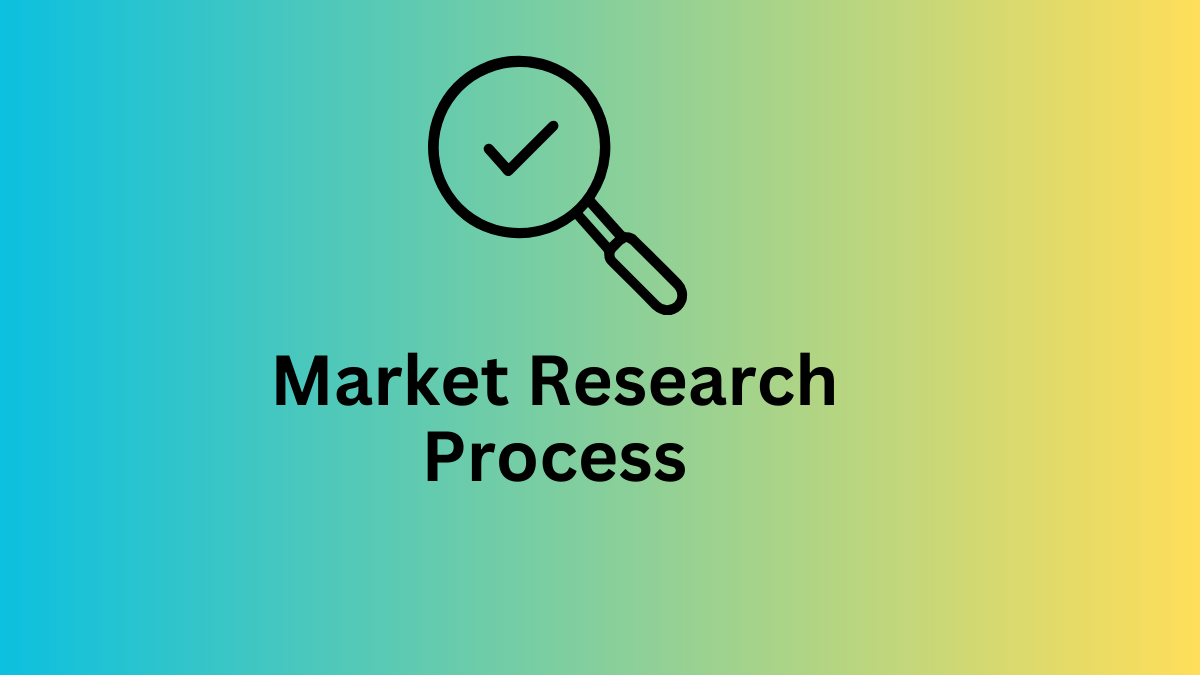Market Research Process
Market research refers to the understanding of the market i.e. consumers’ behavior before making a marketing decision. The decision can be related to new product launches, business expansions, product line changes, and so on.
Where the market research process refers to the series of steps which is followed for successful market research. Let’s explain the six key steps in process of market research.
Define Clear Objectives
Defining clear objectives is the initial and crucial step in market research. It involves setting specific goals for your research, and outlining what you aim to achieve. To do this effectively, consider the following:
- Identify Goals: Determine precisely what information or insights you need. Are you researching customer preferences, market trends, or product feedback?
- Be Specific: Your objectives should be clear, concise, and measurable. For instance, “Understand customer buying behavior for product X.”
- Set Timeframes: Establish a timeline for your research, indicating when you expect to gather data and complete the analysis.
Clear objectives guide the entire research process. They ensure focus and prevent aimless data collection. When objectives are well-defined, you can measure your progress and assess whether the research meets its goals. This step ultimately leads to more effective and meaningful market research outcomes.
Read More: PESTLE Analysis
Collect Relevant Data
Collecting relevant data is the critical second step in market research, helping you gather information that directly addresses your defined objectives. Here’s how to do it:
- Choose Sources: Decide where to find your data. This can include surveys, interviews, online research, or existing databases.
- Target Audience: Ensure your data collection methods align with your target audience. Gather insights from those who matter most to your research.
- Quality Over Quantity: Focus on the quality of data rather than sheer volume. Accurate, valuable data is more important than large quantities of irrelevant information.
Collecting the right data is vital for meaningful insights. It saves time and resources by preventing the collection of unnecessary information. Relevant data helps you make informed decisions, refine strategies, and better understand your market, leading to successful outcomes in your market research efforts.
Read More: Micro Environment of Marketing
Analyze Data
Analyzing data thoroughly is the pivotal third step in market research. Here’s how to do it:
- Data Organization: Organize collected data systematically, making it easier to manage and analyze.
- Identify Patterns: Look for patterns, trends, and relationships within the data. Use graphs, charts, and statistical tools to visualize insights.
- Draw Conclusions: Based on your analysis, draw conclusions about the research objectives and the market’s dynamics.
Analyzing data thoroughly turns raw information into actionable insights. It allows you to understand customer preferences, market trends, and potential opportunities or challenges.
This step guides your decision-making, helps refine marketing strategies, and supports informed business choices, ultimately leading to a competitive edge in your industry.
Read More: Marketing Environment – Definition
Draw Meaningful Conclusions
Drawing meaningful conclusions is the fourth important step in market research. Here’s how to do it:
- Synthesize Findings: Combine your analyzed data and observations to create a clear picture of the market.
- Relate to Objectives: Connect your conclusions directly to the research objectives set at the beginning.
- Look for Insights: Identify key takeaways and insights that can drive business decisions.
Drawing meaningful conclusions transforms data into actionable strategies. It’s the bridge between raw information and practical applications.
These conclusions provide valuable guidance on product development, marketing campaigns, and overall business direction. Without this step, data remains unutilized, and the purpose of the research is unfulfilled.
Read More: Marketing Goals – Definition
Develop Actionable Recommendations
Creating actionable recommendations is the crucial fifth step in market research. Here’s how to do it:
- Based on Conclusions: Build recommendations directly from the meaningful conclusions drawn in the previous step.
- Prioritize Solutions: Identify the most important actions to take, considering resources and feasibility.
- Specific and Clear: Make recommendations precise, leaving no room for ambiguity.
Actionable recommendations are the heart of market research. They provide a clear path forward, guiding businesses on what steps to take based on the data and insights gathered.
These recommendations help improve products, marketing strategies, customer experiences, and overall business decisions. Without actionable recommendations, research remains a theoretical exercise, failing to bring tangible benefits to the company.
Read More: Marketing Management – Definition
Implement and Monitor
Implementing and monitoring is the last but vital step in market research. Here’s how to do it:
- Execute Recommendations: Put the actionable recommendations into practice. This could mean product improvements, marketing strategy changes, or other business adjustments.
- Set Milestones: Define clear milestones and timelines for implementing changes.
- Continuous Monitoring: Regularly track and measure the impact of the implemented recommendations.
Implementing and monitoring is where research transforms into action. It’s about turning insights into tangible improvements.
This step ensures that the company doesn’t just collect data but also uses it effectively to enhance products, services, and strategies. Continuous monitoring helps in staying agile and making further adjustments as needed, ensuring long-term success and growth.
Read Next: 6 Marketing Management Philosophies with Examples
Arti Kushmi holds a BBS (Bachelor in Business Studies) degree and shares her business and marketing knowledge through this website. While not writing she will be reading and enjoying the moment.
